Blueberries are easy to grow, look beautiful in the garden, taste fabulous, and are well-known to be good for you. If you have just a bit of space and some sun, plant a blueberry bush or two as gorgeous landscaping and enjoy the many benefits of sun-ripened blueberries picked straight from your garden.
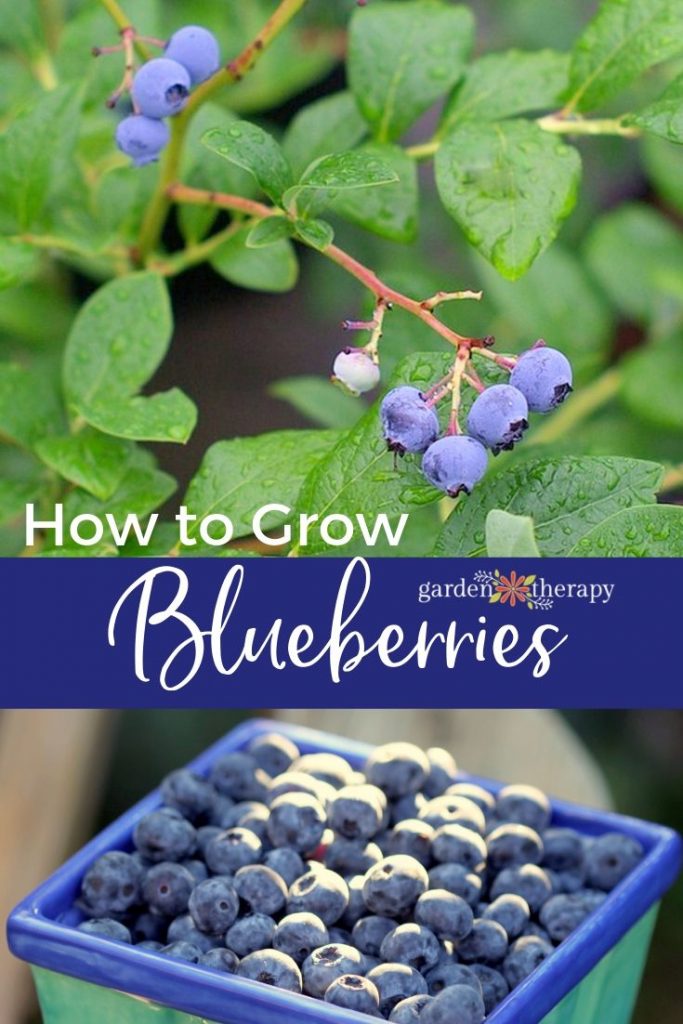
Health Benefits of Blueberries
If you love blueberries, as much as my family does, then you know there is nothing quite like fresh blueberries. I have at least 6-8 blueberry bushes in my small urban garden (I lose count sometimes!) and we get a lot of fresh berries. Even so, I will head out to a local organic blueberry farm each year to pick up another 10-20 pounds of berries to eat fresh and freeze for the winter.

But is that too much of a good thing?
Nope!
Blueberries contain antioxidants called flavonoids. One type of flavonoids, in particular, anthocyanins, are responsible for their rich blue colour as well as many of their benefits. This study on anthocyanins reports that they “possess antidiabetic, anticancer, anti-inflammatory, antimicrobial, and anti-obesity effects, as well as prevention of cardiovascular diseases”. No wonder we are encouraged to fill our plates with rainbow-coloured foods.
Here are a few other known health benefits of blueberries:
- Blueberries are low on the glycemic index, which means that they do not cause your blood sugar to spike.
- They are considered to be a very nutritious fruit, supplying high levels of fiber, vitamins, and minerals.
- Studies show that they help improve memory.
- Numerous studies have shown that blueberries help lower blood pressure.
- Blueberries are closely related to cranberries and may help prevent urinary tract infections.
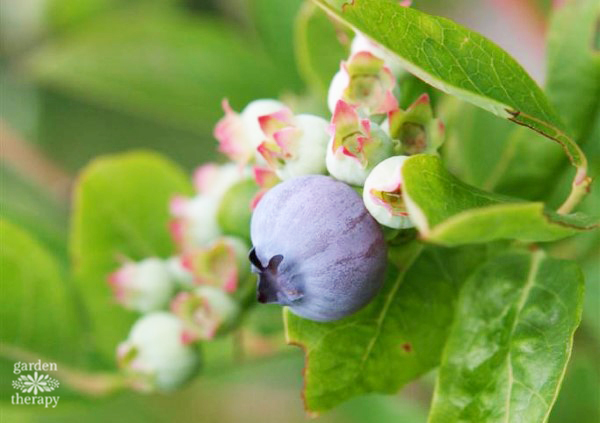
Why Should You Bother Growing a Blueberry Bush?
They taste good, they are good for you, AND they are a fantastic landscape plant.
Add a few blueberry plants to your landscape for their white, bell-shaped blooms in the spring and the bright globes of blue in the summer. But the REAL show happens in the late fall when the bushes turn bright red, neon pink, orange, or red-purple.
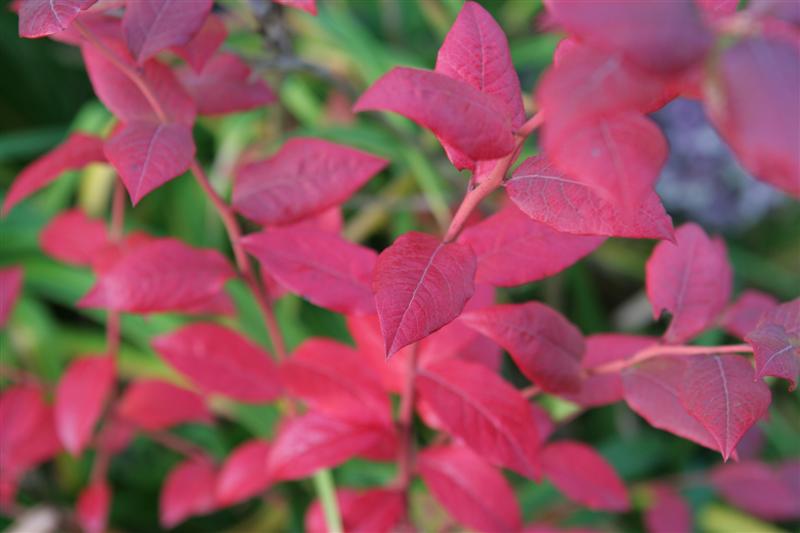
I’m lucky to live where the soil and climate are ideal for blueberries. We have plenty of open-air blueberry farms you can enjoy year round when you drive through agriculture lands. The fields look like they are on fire when the branches turn red in the fall.
Blueberry bushes make a great edible alternative to short growing shrubs like boxwood. Imagine a row of blueberries lining the fence and how many berries you will have! And you know garden-grown food always tastes better than grocery store-bought food.
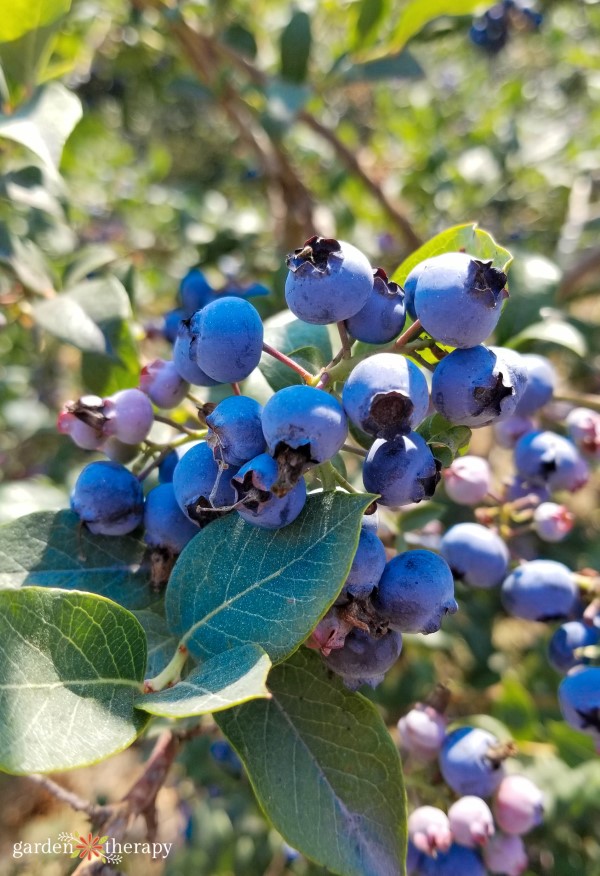
How to Grow Blueberries
Growing blueberries is not that hard, but climate and soil have a lot to do with it. My climate in Vancouver, BC, is ideal with moderate year round temperatures and plenty of rain. If you are in a different climate where it makes it harder to grow them in the ground, blueberry bushes do very well in containers as well.
There are a few things to know when growing blueberries.
Planting Blueberry Plants
To plant the blueberry plants that you purchased from the nursery, dig a hole two times the size of the roots, and add in a rich compost mixture. Plant the bushes to the same depth as the nursery had it. Once your new bush is planted, trim off 25% of the branches to encourage new branching.
Blueberries are Acid-Loving Plants
Lucky me! I live in a blueberry country. They love the naturally acidic soil of Southern Coastal BC. Blueberries grow well in the Pacific Northwest because the high rainfall levels add additional acidity to the soil (remember those acid rain warnings of long ago?).
In other areas, you may want to test your soil to find out the pH level and adjust it to near 5.0. Adjusting your soil’s acidity level can easily be accomplished by mixing garden sulfur into your soil.
Well-Drained Soil
Blueberry bushes like to drink a lot of water (which makes sense because the berries are 84% water), but they don’t like to sit in water constantly. They have a shallow root system and consistently being in wet soil could cause root rot. If water stands for 2 days in the spot you want to plant a blueberry bush, plant it somewhere else instead.
Full Sun
While blueberries can grow in partial shade, try to choose a sunny location when planting your blueberry bushes to maximize your bush’s fruit production.
Use Mulch
Add about 3 inches (deep) of mulch around your blueberry bushes to help prevent your plants from drying out and to offer some protection during winter. For mulching, you can use wood chips, sawdust, pine needles, or shredded autumn leaves.
Add Netting
It’s no surprise that everyone, including birds, love blueberries. Somehow, birds know the second the berries turn from green to blue and will eat them all faster than you can say “put up the net” if you don’t protect your plants with netting.
Use tightly woven netting (which you can find at any garden center) to help keep the birds away so you have time to harvest the sweet berries for yourself.
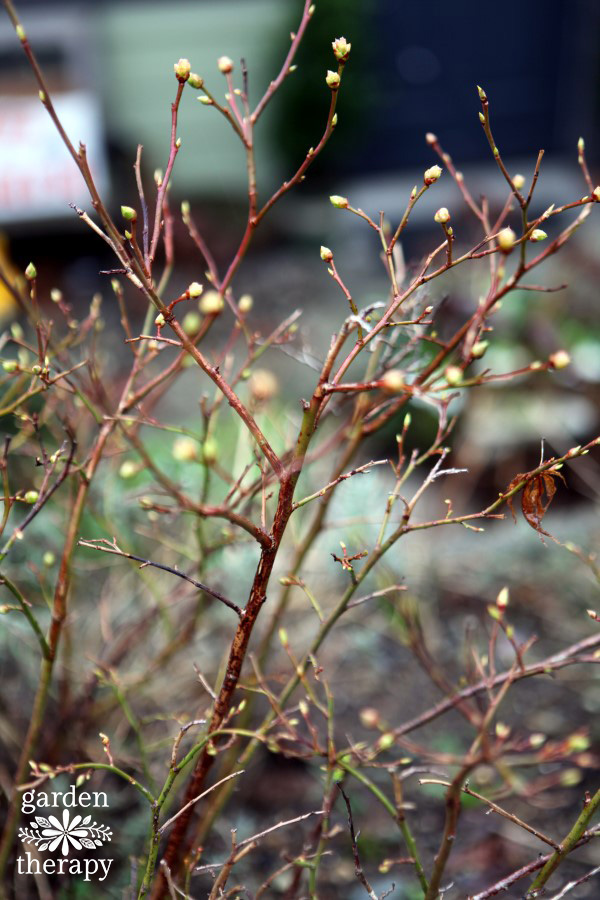
Pruning
Most varieties bloom on 2, 3, and 4-year old wood. It’s not difficult to tell which are the new branches and which are those that are no longer producing. If you didn’t have as productive of a year as you would have liked, prune back the oldest branches to encourage new growth. If you are going to prune, do so in late winter. Always remove the dead or diseased branches so the plant isn’t wasting energy on those.
If your plant is 6 years old or younger, pruning selectively will be most effective. For older plants that are not producing well, cut up to 2/3 of the plant to the ground leaving only the youngest branches.
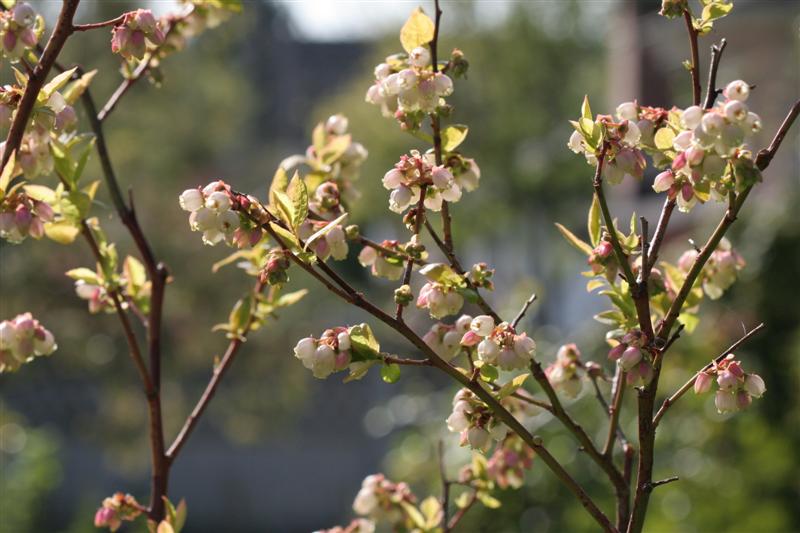
Choose Your Varieties
Some blueberry plants (but not all) are self-pollinating so if you have a small space, then search for a variety that will fruit with just one plant. Other varieties require that you plant two of the same type.
I grow Bluecrop, Duke, and Pink Lemonade in my yard. I also grow blueberries (and other fruits like strawberries) in containers. I choose these varieties based on beauty, size, and fruit production in small spaces.
The Pink Icing variety is one of my favourites.
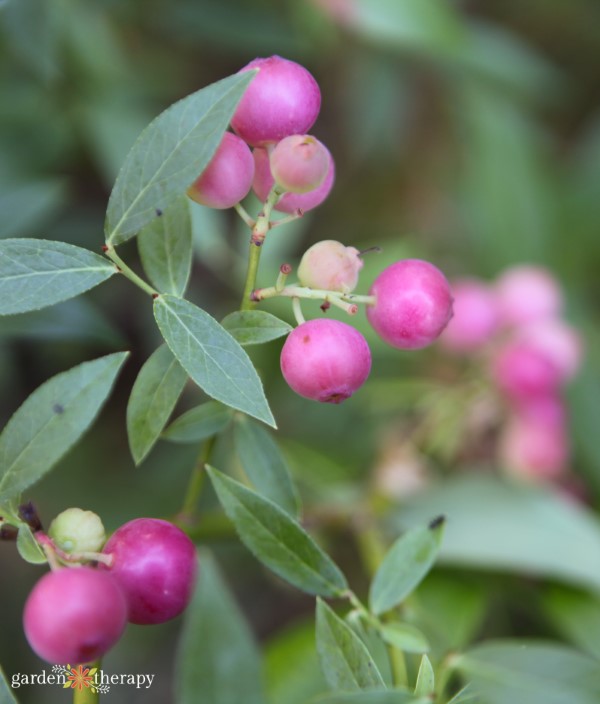
Perfect for Containers
Blueberries make the perfect fruit plant for a balcony or patio. Their relatively shallow root system means that you can successfully grow blueberries in containers. Some nurseries even sell dwarf varieties bred for container gardening.
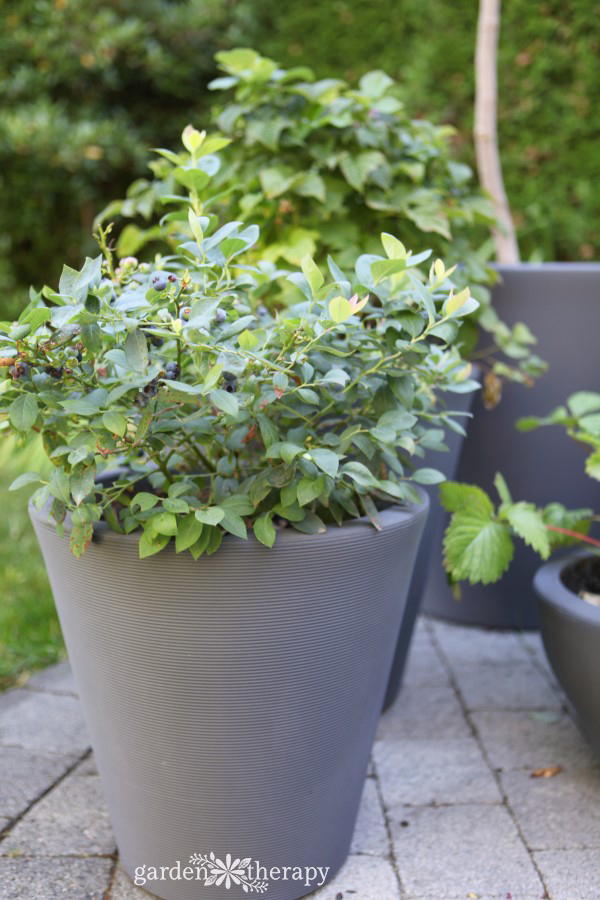
Harvesting Your Blueberries
Harvest the berries when they turn blue all the way around and can be easily removed from the bush. Be patient. Like many fruit plants, it may take a while to have a full crop of berries.
As you are waiting for additional berries to ripen, store the harvested berries by refrigerating or freezing them in a covered container (or freezer bag) as soon they’re off the bush. Washing them removes the protective bloom (the waxy, gray coating that covers the berry) causing them to spoil faster.
Instead, wash berries just before eating.
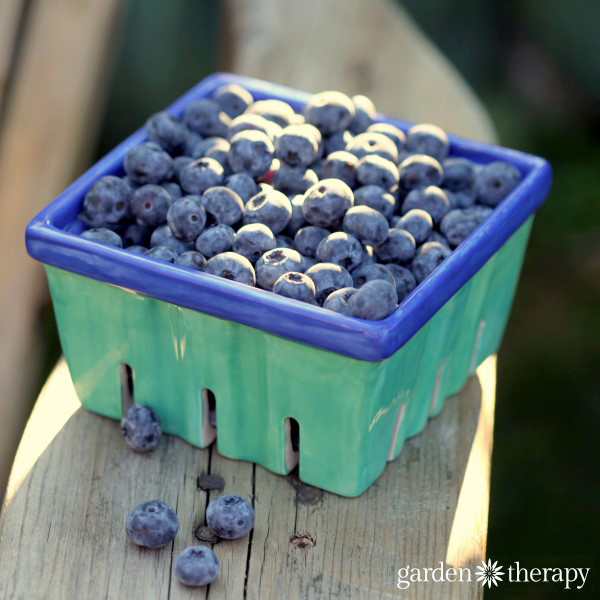
Eating Blueberries From Your Backyard Blueberry Bush
Blueberries are not only delicious, but they’re versatile as well! Try enjoying nature’s (blue) candy one of these ways:
- As a great snack for any time of the day just by themselves.
- Use them as a great add-in to cereals and salads, like this delicious Spinach Blueberry Salad.
- We also love to make a fresh fruit salad with strawberries, blueberries, blackberries, and any other fruit we have that day.
- Delight friends and family with homemade blueberry jam which condenses the flavour and makes wonderful presents.
I hope you’ll try your hand at growing blueberries. Given all the benefits of blueberries as well as the relative ease of having a blueberry bush (or two) in your garden, I think you’ll find the experience very rewarding.

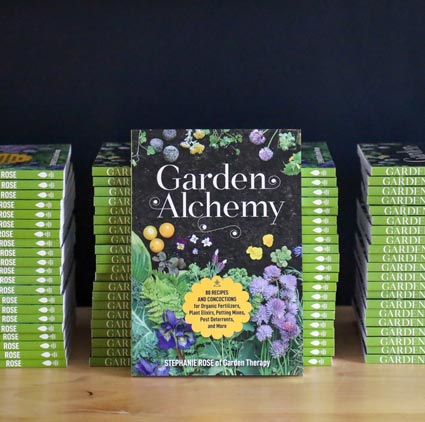


I have been growing blueberries for years in the N. GA. mtns.. My secret, save my coffee grounds all week, water them down and pour around the base of the bushes. I do it all year long, regardless of the season. As you mentioned, they are acid loving plants and I get a great yield every year. It’s also good for Azaleas and Lily of the Valley.
Do not give blueberries nitrogen. they fix what they need from the air. 0-10 4 or something similar. Very bad advice on the fertilizer. Nitrogen toxicity is a problem with blueberries.
That first blueberry pic was stunning to me for some reason. And they’re self pollinating; I didn’t know…! I love the coffee tip comment here.
I had a blueberry bush in a pot for 7 years or so. It never bloomed. My daughter planted it while I was away and that was ok. I’d get a few blooms and the birds would eat the few berries that came and that was ok. Then last year, my 19 year old plant bloomed it’s heart out! I was in heaven. Hoping this year would be good I waited. But not a leaf or bloom or berry showed up. It’s dead. I don’t understand it but I will remember the fabulous year I had. Will try again next spring, maybe in a pot on the patio. Thanks for the great information.
I have 5 blueberry bushes. I get about 20 to 30 gallons each season. I freeze them and eat them all year long. I use about a cup full of blueberries in my oatmeal.
Jeff Black
Live in Central VA. We have a blueberry bush that the past 2 yrs have well produced this wonderful crop. BUT…… you can’t eat them!!! Which really saddens me. They are SO SOUR…. What does anyone suggest??
It may be the variety, unfortunately.